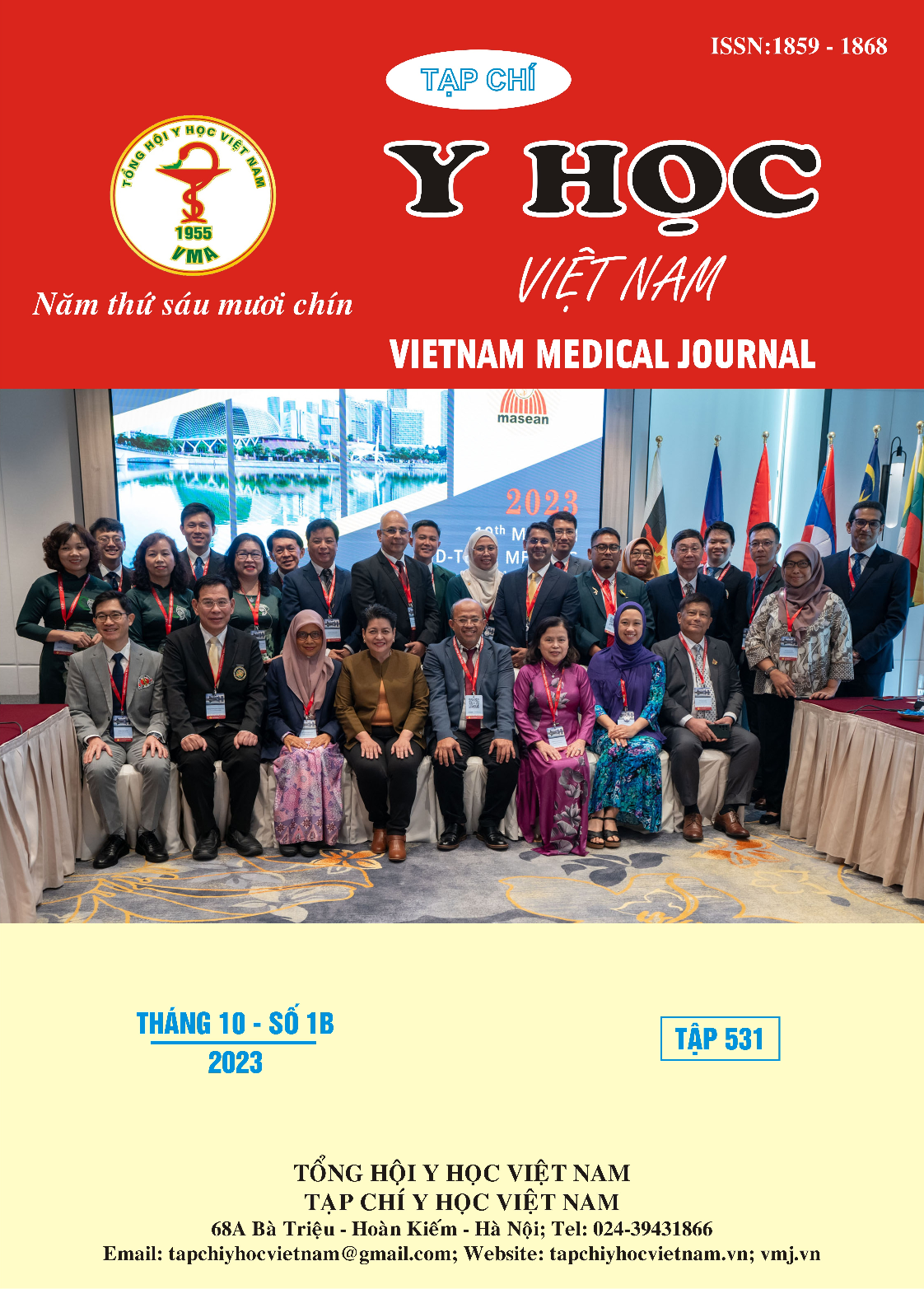THE SIGNIFICANCE OF NASAL CONTINUOUS POSITIVE AIRWAY PRESSURE (N-CPAP) VENTILATION IN TREATING SEVERE HEART FAILURE FOR CHILDREN HAVING CONGENITAL HEART DISEASE (CHD) WITH INCREASED PULMONARY BLOOD FLOW
Main Article Content
Abstract
Objective: The study aims to investigate the role of N-CPAP ventilation in treating severe heart failure for children having CHD with increased pulmonary blood flow. Methods: A one-group quasi-experimental study design was employed to examine the effectiveness of N-CPAP ventilation on the treatment of severe heart failure for a convenience sample of 42 eligible children from August 2021 to July 2022. All children (ages ranging from 2 months to 16 years of age) who had a diagnosis of severe heart failure (class IV) caused by CHD with increased pulmonary blood flow received treatment-CPAP ventilation at Heart Center, the National Children's Hospital. Results: Among 42 children, ages ranged from 2 months to 16 years of age with the mean age at 5.49 months (SD = 4.6). The mean weight of these children (n=42) was 8.32 kg (SD = 5.67). Children with ventricular septal defect (n = 14) held the largest propotion with 33.2%. About 29 children (69%) had their heart failure successfully treated using N-CPAP ventilation in compared to a number of 13 children (31%) who did not recover from the administration of this treatment. The children who had successful treatment using N-CPAP ventilation had shorter mean hospital stay (M = 7.26, SD = 5.67) than those did not (M = 14.2, SD = 2.8). The percentage of children with severe heart failure after the administration of N-CPAP ventilation dramatically decreased from 100% to 21.4%. There were significant drops of heart rate (p<.01), respiratory rate (p<.01), oxygen saturation (p<.01) and pH (p<.001) in this population before and after the application of N-CPAP ventilation. Only seven children (16.7%) and about five children (11.9%) presented with mild complications of N-CPAP ventilation, including nasal pressure ulcer and abdominal distension,. Conclusions: The administration of N-CPAP ventilation may contribute to the improvement of clinical symptoms of severe heart failure among children having CHD with increased pulmonary blood flow.
Article Details
Keywords
severe heart failure, Nasal Continuous Positive Airway Pressure, children, congenital heart failure and increased pulmonary blood flow.
References
2. Châu Ngọc Hoa, Đặng Vạn Phước, Trương Quang Bình. Sinh lý bệnh của suy tim. Suy tim trong thực hành lâm sàng. Nhà xuất bản Y học Hà nội. 2014;15-29.
3. Robert D. Ross. The Ross Classification for Heart Failure in Children After 25 Years: A Review and an Age-Stratified Revision. Pediatr Cardiol. 2012;33(8):1295-1300.
4. Masip J. el at. Indications and practical approach to non-invasive ventilation in acute heart failure. Eur Heart J. 2018;39(1):17-25.
5. Marco Zuin et al. Worsening hypoxemia with mechanical ventilation in posttraumatic ventricular septal defect. Intensive Care Medicine. 2019; 45(11):1647-1648.
6. Amaddeo A et al. Continuous positive airway pressure improves work of breathing in pediatric chronic heart failure. Sleep Med. 2021;83:99-105.
7. Amaddeo A, et al. Non-invasive Ventilation and CPAP Failure in Children and Indications for Invasive Ventilation. Front Pediatr. 2020;8:1-2
8. Ngô Anh Vinh, Phạm Hữu Hoà và Nguyễn Thị Mai Hoàn. Kết quả điều trị suy tim ở trẻ em tại bệnh viện Nhi Trung ương. Tạp chí Y học Việt Nam. 2022;2:184,185.
9. Nguyễn Thị Yến, Trần Duy Vũ, Lê Thị Hồng Hanh. Hiệu quả của thở áp lực dương liên tục qua mũi trong điều trị suy hô hấp cấp ở trẻ em tại Bệnh viện Nhi Trung ương.Tạp chí Y học Việt Nam. 2021;tập506(1);tháng 9:3.
10. Hemang Gandhi et al. Elective nasal continuous positive airway pressure to support respiration after prolonged ventilation in infants after congenital cardiac surgery. Annals of Pediatric Cardiology. 2017;10(1):27-29.


